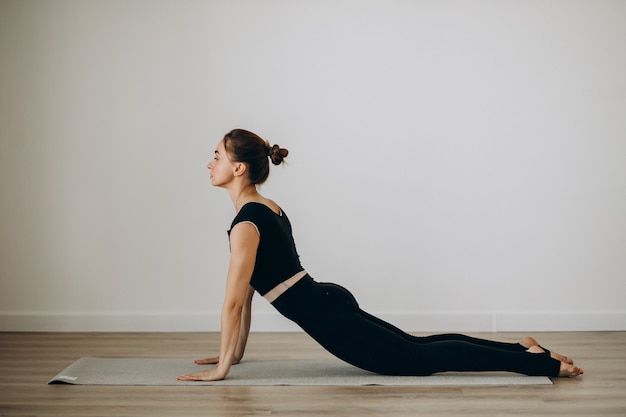
A yoga body isn’t just about flexible limbs; it can also boost memory, and heart, and bone health.
We’ve become a nation hooked on yoga, and Brits now spend an astonishing £790 million each year on classes and mats. Yoga, despite its sometimes odd and novel variations like naked yoga or dog yoga, is being backed by science for its health benefits.
For instance, UCLA researchers discovered that a three-month course of yoga and meditation improved age-related brain impairment better than memory exercises. It also helped breast cancer survivors improve their sleep. When Lucy Edge, a former advertising executive, experienced a deep depression, she chose yoga over prescribed antidepressants. After a career break and learning yoga in India, she returned much happier. Lucy has since written several books about yoga and founded Yoga Meds, a resource listing over 300 clinical trials that demonstrate yoga’s benefits for various conditions.
If you’ve relied on crossword puzzles or Sudoku for memory training, integrating yoga might be beneficial. UCLA studies show that a 12-week course of yoga and meditation improved spatial and visual memory in adults over 55 more than memory exercises did. Participants experienced reduced depression and anxiety and increased resilience to stress.
To start, you don’t need to do headstands for hours. In one study, participants did just an hour of Kundalini yoga weekly. This gentle form of yoga incorporates breathing techniques, meditation, and chanting mantras. Additionally, they practiced 20 minutes of Kirtan Kriya daily, which combines chanting, hand movements, and visualization of light.
While we often hear about the benefits of walking or jogging for heart health, yoga can be equally effective. A review published in the European Journal of Preventative Cardiology in 2014 found that yoga could lower heart disease risk as much as brisk walking. Stress plays a significant role in heart disease, and yoga’s stress-reducing benefits help by lowering blood pressure and heart rate, making blood clots less likely.
Dr. Mike Knapton from the British Heart Foundation notes that yoga has well-established benefits for emotional health and helps improve conditions like anxiety, stress, and depression. Practicing yoga has also been linked to improved blood pressure, cholesterol levels, and weight.
If you’re new to yoga, try starting with a series of gentle poses. Instructor Charlotte Watts has created a stress-reducing routine, and Restorative yoga, suggested by instructor Anna Ashby, involves holding supported postures for extended periods, offering deep relaxation.
Yoga is also beneficial for back pain. Physiotherapist and yoga teacher Sarah Shone developed yoga classes for a back pain rehabilitation program, with 87% of participants reporting pain reduction. The National Institute of Clinical Excellence recommends yoga for lower back pain, and Shone aims to train more physiotherapists to use yoga clinically.
Yoga works on the pelvic floor muscles and is weight-bearing, enhancing bone density. It is adaptable, making it accessible for various health conditions.
Beginners should inform their instructor about any health issues and consider starting with gentler styles like Hatha or Iyengar. For specific conditions like back pain, consult your doctor to see if you are eligible for subsidized yoga through an exercise referral scheme.
If you’re getting into yoga, invest in good props to perfect your practice. When choosing a yoga mat, consider where you’ll use it, its portability, and your height. A thicker mat can protect your joints and provide comfort. Healthista recommends the Elephant Cork Yoga mat from Valka Yoga, which is eco-friendly and offers great joint protection.
Cork yoga mats are antimicrobial and provide more grip when wet, making them ideal for those who sweat during hot yoga sessions. Valka mats come with a carry strap, a money-back guarantee, and a replacement warranty.
In addition to a mat, a yoga block can assist in achieving difficult poses by adding extra length and providing more grip, especially when made from cork.
Flexible or not, yoga has something for everyone. Try Yin or Restorative yoga for relaxation, Vinyasa Flow for an energetic workout, Iyengar for a focus on alignment, or Anusara for flowing movements. Yoga Therapy can be helpful for specific injuries or illnesses.
Lucy Edge’s latest book is available on Amazon.

